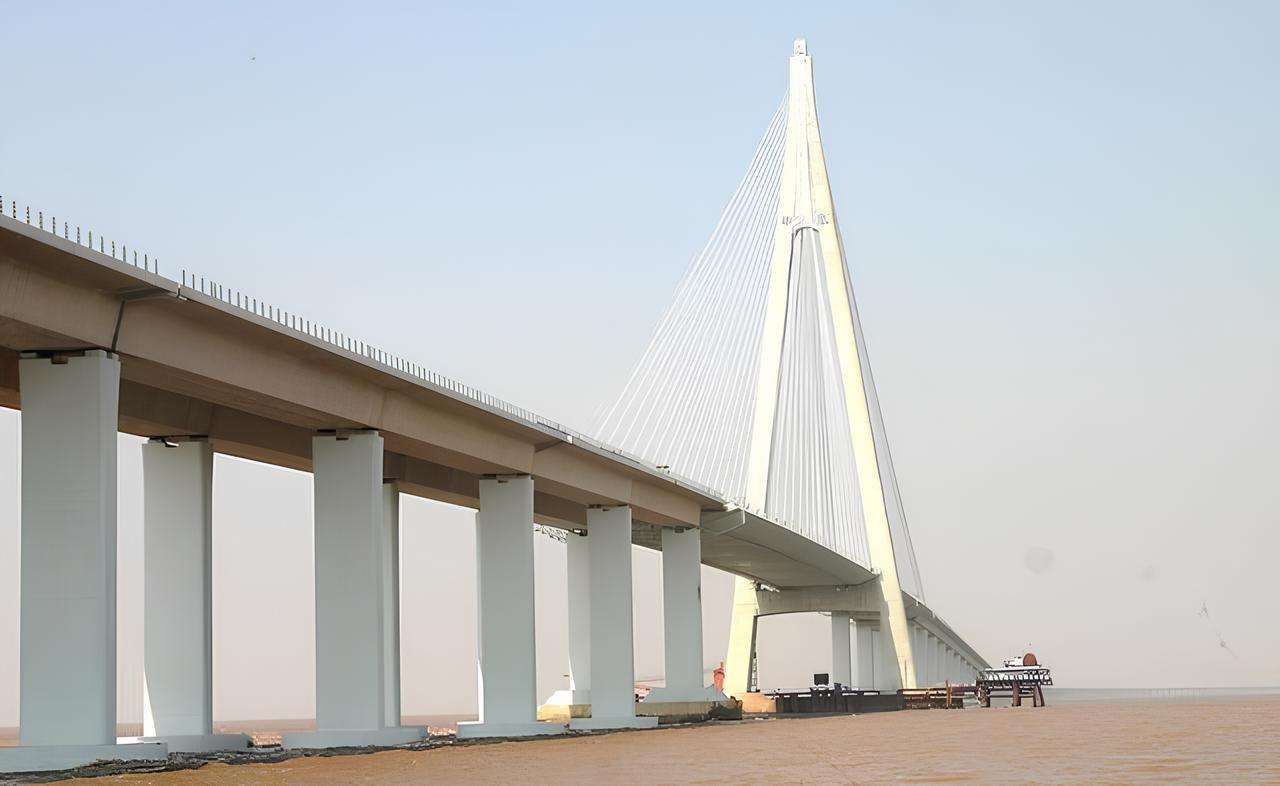The application of the structure with first simple support and then continuous structure in the field of bridges is becoming increasingly widespread. In the previous article, we introduced its construction technology. This article will guide you through the construction process of converting prestressed concrete simple support into continuous T girder or continuous box girder,and put forward the quality control measures during construction to ensure quality.

The temporary support should have sufficient strength and stiffness, be easily assembled and disassembled, and can evenly lower the girders. After the prestress tensioning is completed, temporary support can only be removed when the grouting strength is greater than 35 MPa. When removing the temporary support, it should be carried out symmetrically, evenly, synchronously and smoothly hole by hole.
After the temporary support is removed, the permanent support should be attached to the pier top and the bottom of the girder. With the current construction technology, there are various methods for setting up temporary support. Take the construction method of a removable sand box support as an example. When using a sand box support, the settlement amount of the sand box after bearing the self-weight of the T-beam and the weight of the bridge erecting machine should be fully considered, and there should be a gap between the bottom of the beam and the pot bearing. During construction, the settlement amount of each sand box may not be exactly the same, which may result in some T-beams being suspended in the air, creating potential quality hazards. There are two solutions:
(1) Obtain the average settlement amount of the sand box after being stressed through a preloading test and use this information to guide the on-site installation of temporary support to ensure that the installation elevation of the T-beam is consistent with the design elevation.
(2) Properly lower the bearing padstone and reserve about 3cm of height for the concrete beam. When casting the wet joint, place a steel plate on the pot bearing and cast the concrete onto the steel plate one by one, forming the concrete beam shoe.
The tensioning prefabrication pedestal should be firm, free from settlement, and conducive to drainage to prevent the foundation from subsiding due to poor drainage. The value of the camber of the pedestal should be determined by referring to the camber value provided in the design documents and combining with the actual construction and the tensioning situation of the production trial girders. The camber should be in the shape of a parabola. In addition, the installation accuracy of the bridge should be strictly controlled, and the error should not exceed 2mm.
During the construction, it has been found that the connection between the new and old concrete is the main problem of the cast-in-place continuous section concrete. Therefore, the ends of the prefabricated beam slabs must be strictly roughened. In order to prevent the shrinkage cracks from occurring in the cast-in-place continuous section concrete during the curing and hardening process, which may affect the bearing capacity of the concrete during the secondary tensioning process and the overall mechanical performance of the bridge, a micro-expansive agent should be added to the cast-in-place continuous joint concrete, and the dosage is generally controlled between 0.5% and 1% of the cement dosage. The pouring temperature of the cast-in-place continuous joints of each unit of the bridge with first simple support and then continuous structure should be basically the same, and the temperature difference should be controlled within 5℃, and it is preferably constructed at the lowest temperature of the day.
The pouring sequence of the joint concrete should be strictly implemented according to the requirements of the design documents. The time from the prefabrication of the main girders to the completion of the pouring of the transverse wet joints should not exceed 3 months. The wet joint concrete can be poured using the suspended formwork construction method. The formwork should be made of steel formwork and should have sufficient stiffness and strength. After the formwork is firmly installed, rinse the roughened concrete surface. Before pouring the next layer of concrete, a layer of neat cement paste should be brushed on the construction joint. The pouring and vibration of the concrete should meet the same requirements as those for the pouring of the top slab of the prefabricated main girders. It is advisable to use a combination of a flat vibrator and an insertion rod and ensure the design thickness. The wet joints should be poured under relatively low temperature conditions and properly cured to prevent cracks. The cast-in-place joint section concrete can use micro-expansive cement.
In conclusion, during the construction processes of the prestressed concrete simply-supported continuous T-beams and box girders, the quality control of the installation of temporary support, the installation of the tensioning prefabrication pedestal, the construction of the post-continuous cast-in-place section, and the construction of the cast-in-place joints of the main girders and the wet joints are of vital importance. The quality control of each link is closely related to the overall stability, safety and durability of the bridge. Only by strictly following the various quality control key points and precisely implementing the construction standards can we effectively avoid potential quality hazards and ensure that the bridges with first simple support and then continuous structure can stably bear the traffic load for a long time after being put into use, and guarantee the smoothness and safety of transportation. In the future, with the continuous development of bridge construction technology, we should pay continuous attention to and optimize the construction quality control measures to promote the bridge engineering construction to a higher level.

International Department: Room 2507-2508, Tower C of Wanda Plaza, Tongzhou District, Beijing 101118, China.
+86-13021287080
info@boyoun.cn